On View
Muggles, Rejoice! Magic Comes to Life at the New-York Historical Society’s Blockbuster Harry Potter Show
Here's a true Potterfreak's guide to the show.
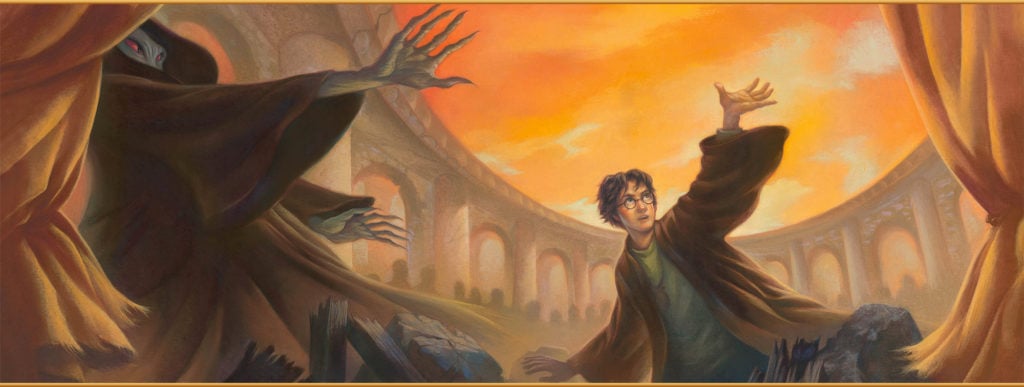
Here's a true Potterfreak's guide to the show.

Sarah Cascone

“Harry Potter: A History of Magic,” one of the most eagerly awaited museum shows of the year, opened this past weekend at the New-York Historical Society. It traveled from the British Library in London, where it debuted last year and quickly became the institution’s most visited show ever.
On view are fascinating real-world artifacts related to the subjects taught at Hogwarts School of Witchcraft and Wizardry, original illustrations from both the British and American versions of the series, and all sorts of treasures from author J.K. Rowling’s personal archives.
The show celebrates the 20th anniversary of the publication of the first book in the series, Harry Potter and the Sorcerer’s Stone, which came out in the US in 1998. Even though Rowling was an unknown writer, a single mother who struggled to finish the manuscript while living on public assistance, the books were an immediate hit. They have since spawned mountains of merchandise, a Tony-winning Broadway play, Warner Brothers theme parks, and a film series starring Daniel Radcliff, plus the Fantastic Beasts and Where to Find Them spin-off movies.
The timing hits home for me personally. It was 20 years ago this month that the first book, inconspicuously displayed on the bottom shelf of my elementary school’s Scholastic book sale, caught my eye. Sensing intuitively that this book would be special, I bought the pricey hardcover in lieu of picking up several cheaper paperbacks. I waited until the holidays to read it: a Christmas present to myself. As they did for so many young people, the books became an all-consuming obsession during my teenage years.
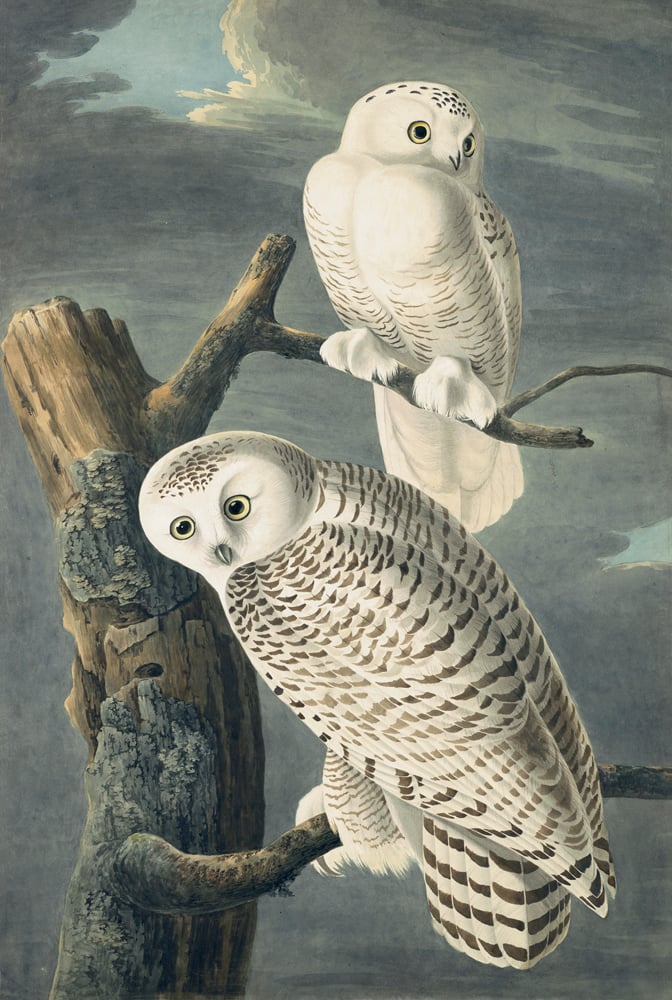
John James Audubon, Snowy Owl (Bubo Scandiacus) (1829). Photo courtesy of the New-York Historical Society.
That collective excitement bookends the exhibition, which opens with a massive trunk, which was used to ship the US the very first copy of Harry Potter and the Half Blood Prince. It ends with a video documenting the public’s passionate enthusiasm for the series. In between, the exhibition is organized by the different subjects taught at Hogwarts—charms, defense against the dark arts, herbology, astronomy, potions—demonstrating how Harry Potter is deeply rooted in the real history of magic through historical documents and objects.
The show delves into the history of the books themselves, including early drafts, Rowling’s illustrations from the early 1990s, and letters from the publishers during the editing process. The author’s drawings, some of which fans may have previously seen online, are a delight, especially the one of half-giant Hagrid feeling queasy as he and Harry take a roller coaster ride through Gringotts bank. And it’s nothing short of impressive to see her plotting chart for the fifth book, Harry Potter and the Order of the Phoenix—the longest in the series—with the action carefully broken down month by month.
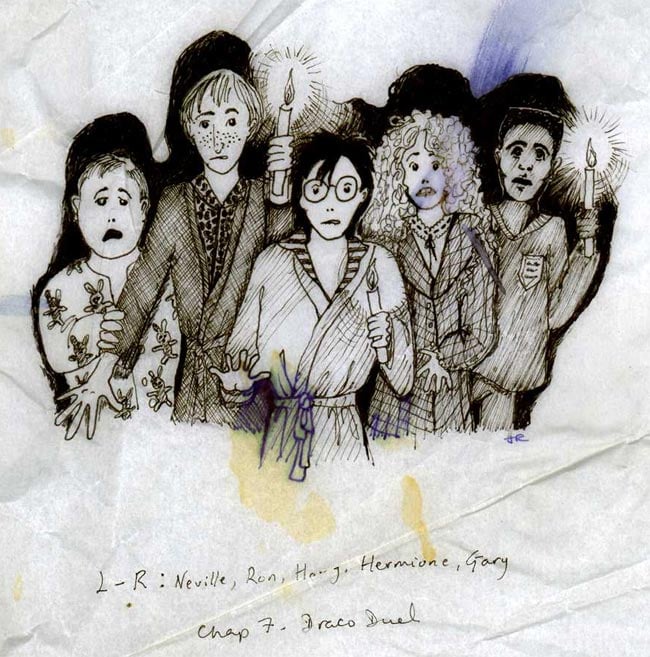
One of J.K. Rowling’s original illustrations for Harry Potter and the Sorcerer’s Stone. The character Gary was renamed Dean Thomas in the final publication. Courtesy of J.K. Rowling.
There is also a copy of Culpeper’s Herbal, a 17th-century text on medicinal herbs that Rowling referenced when coming up with the books’ potions and magical plants. Nearby, you can see a 15th-century drawing of the supposedly fatal mandrake plant, whose roots take the form of tiny humans—one of the plants Harry and his classmates must tend in their classes with Professor Sprout.
Other highlights include the first-known printed use of the word Abracadabra, in a 13th-century charm for curing malaria; history’s earliest star chart, an extraordinarily accurate document from China circa the year 700; and a journal entry from Leonardo da Vinci about the Moon. (Sadly, it was not his finest scientific moment: he speculated that the lunar surface was covered with water, and that the moon and sun revolved around Earth.)
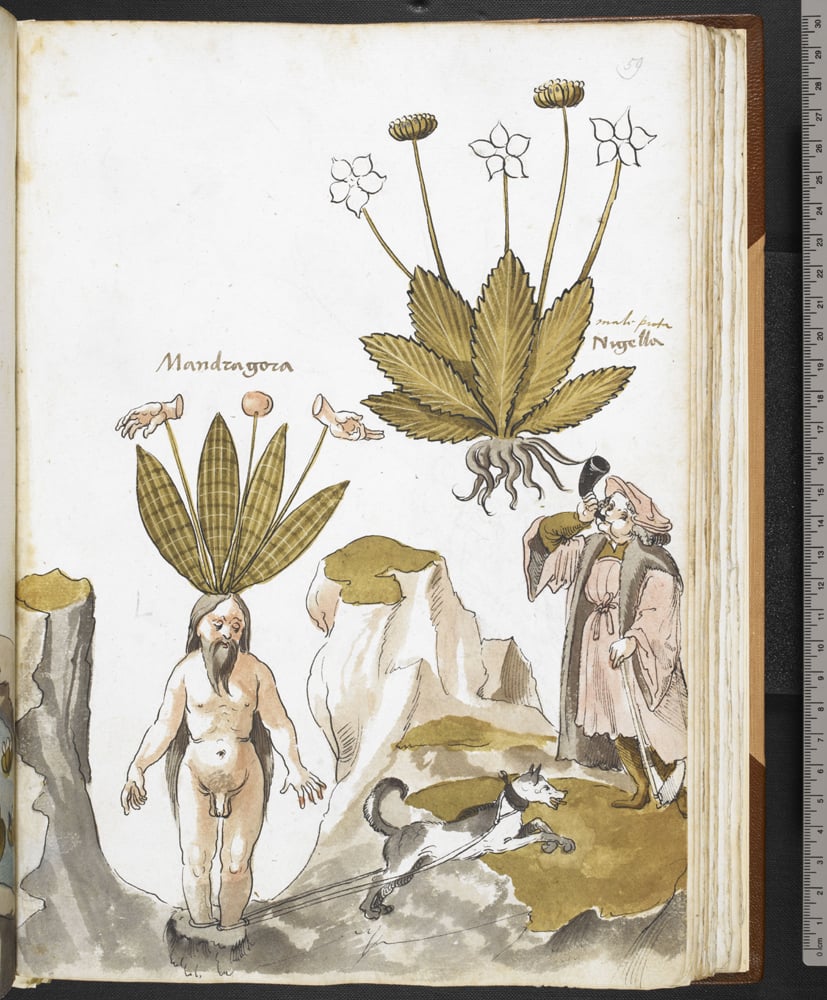
Giovanni Cadamosto’s illustrated herbal (Italy or Germany, circa 15th century). This drawing depicts the mandrake, a plant that was thought to cure various diseases if the doctor could avoid hearing the shrieks from its roots. ©British Library Board.
There’s also a fantastic drawing of a giant bird-eating spider by naturalist and illustrator Maria Sibylla Merian, the first woman to lead a scientific expedition. Her 1705 report was ridiculed for decades, but the terrifying creature’s existence was finally acknowledged by the scientific community in 1863.
Rest assured that the exhibition isn’t all dusty old manuscripts, however. You can see a real bezoar, a stone-like mass from the stomach of goats and other ruminants said to counteract the deadly effects of poison—as witnessed in the books.
Meanwhile, the first depiction of witches with a cauldron, from 1489, is paired with a real, rusted-out cauldron, now part of the collection of the Museum of Witchcraft and Magic in Boscastle, Cornwall. There’s also a broom from Olga Hunt, a 20th-century witch, and even an “invisibility cloak” from a “private collection,” the hanger largely invisible, obviously, where it lies beneath the magical fabric.
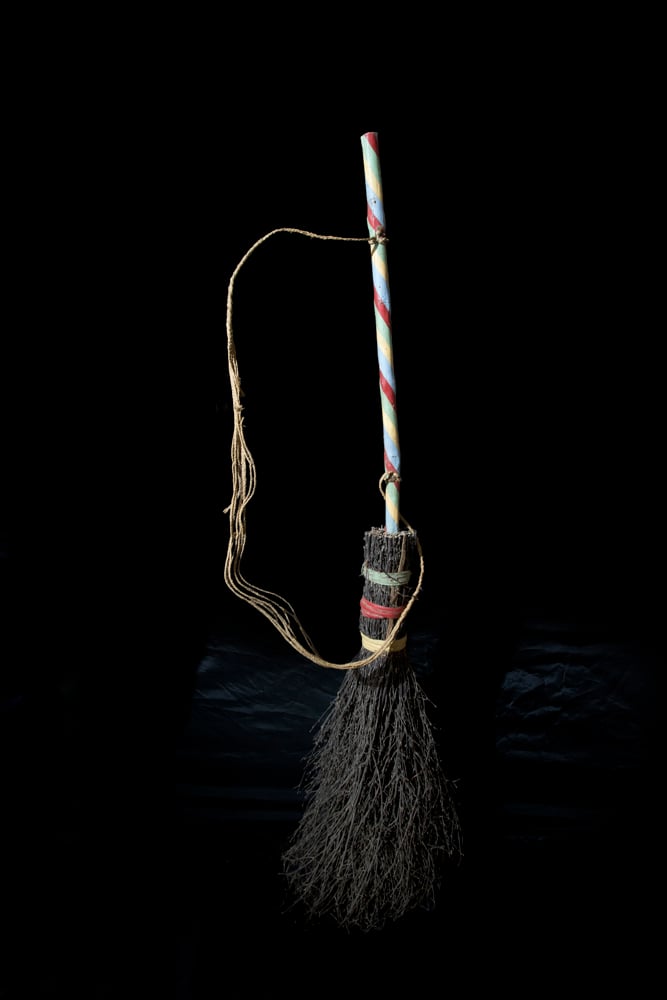
Broomstick belonging to Olga Hunt. Photo ©the Museum of Witchcraft, Boscastle, UK.
Additions to the exhibition since its London iteration include original illustrations by several of the artists who have illustrated the Harry Potter books over the years, including 15th-anniversary art by Kazu Kibuishi and the 20th-anniversary edition illustrations by Brian Selznick.
It’s especially exciting to see the original pastel drawings that Mary GrandPré made for the first American editions of the book, designs that came to largely define the public image of Harry before the films’ release. Her instantly recognizable style can also be seen in artworks produced for a cancelled 2001 Harry Potter calendar that have never been shown before.
Also moving are portraits by Jim Kay, who is currently producing illustrated versions of each book in the series. His painting of Severus Snape is full of subtle references to his character, such as a mole in a bottle, because Snape was Dumbledore’s spy, and lilies of the valley, representing his undying love for Harry’s mother, Lily Potter.
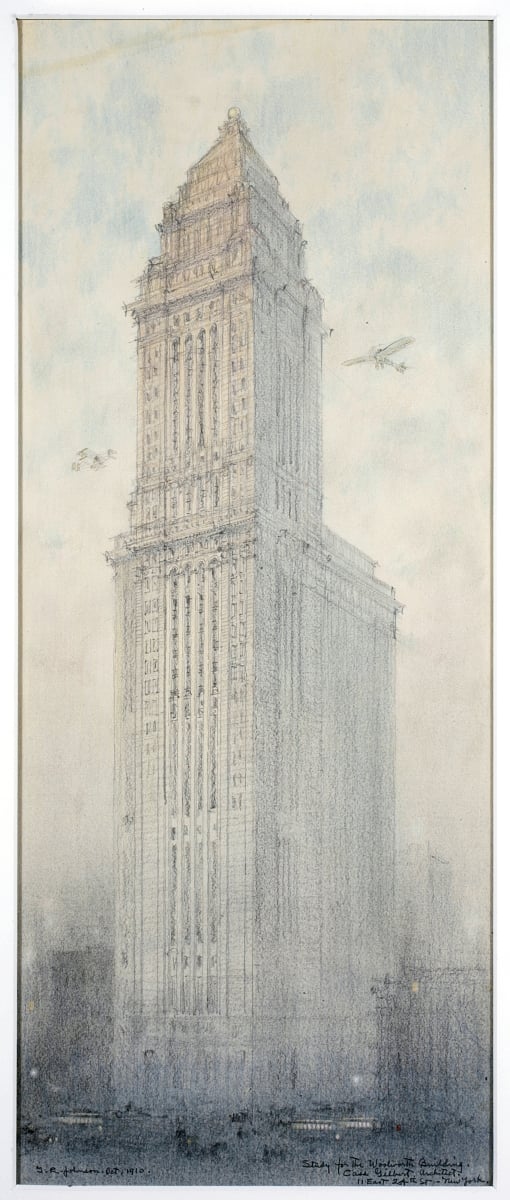
Cass Gilbert, Study for the Woolworth Building (New York, 1910). Courtesy of the New-York Historical Society Library, Cass Gilbert Architectural Record Collection.
New York City itself also comes into play in the show. In the film Fantastic Beasts and Where to Find Them, the Woolworth Building—coincidentally home to the Artnet News office—is home to the Magical Congress of the United States.
It was an especially fitting choice from the filmmakers, as the gorgeous lobby mosaics even feature phoenixes—an important magical creature in the Harry Potter series said to resurrect after burning to ashes. At the Woolworth, it’s a reference to the then-state-of-the-art technology that made the building fireproof. (Elsewhere in the show, an illustrated medieval bestiary from 13th-century England shows the bird bursting into flames.)
Also hailing from New York are the two giant owls standing watch over the exhibition’s entrance. The New York Herald editor, James Gordon Bennett Jr., allegedly loved owls so much that he kept live ones in his office. The statues, created at his behest for the old Herald Building (which stood from 1908 to 1921), were originally fitted with electric green glass eyes, and are on long-term loan to the historical society from New York University.

John James Audubon, Snowy Owl (Bubo Scandiacus), 1829. Photo courtesy of the New-York Historical Society.
Owls—the postal service of the wizarding world—also feature in the exhibition’s care of magical creatures section, where the New-York Historical Society has drawn from its own collection to present John James Auduobon’s life-size snowy owl watercolor from The Birds of America.
Other animals represented include a “unicorn horn” from the New York Explorer’s Club and a “real” mermaid on loan from London’s Horniman Museum and Gardens, accompanied by a section from an early draft of Harry Potter and the Chamber of Secrets where Harry and his best friend crash their stolen Ford Anglia into the Hogwarts lake, not the Whomping Willow, and are rescued by a mermaid. (Full disclosure: the unicorn horn is from a narwhale, and the mermaid combines a carp’s body with a carefully disguised wooden skull and chicken leg claws.)
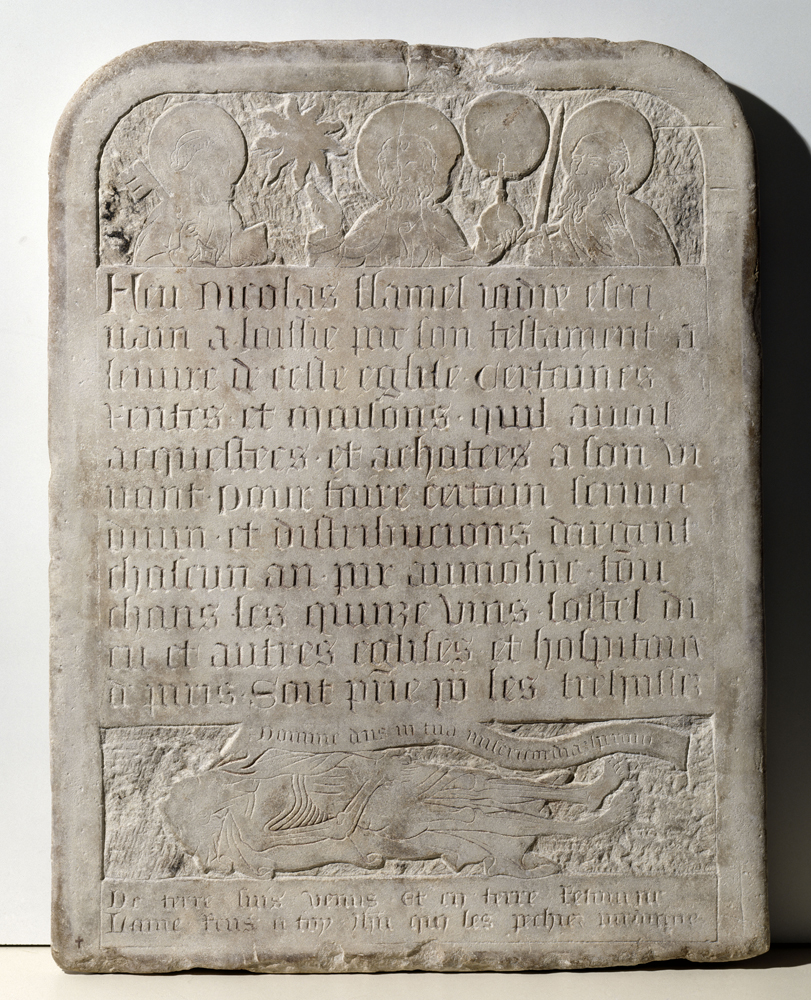
Tombstone of Nicolas Flamel (circa 15th century, Paris). After his death, Flamel, a Parisian landlord, was rumored to have discovered how to make the Philosopher’s Stone. Photo ©Musée de Cluny, Musée National du Moyen Âge, Paris.
In addition to artifacts from the UK show, other objects from the historical society’s collection and local loans are also on view, sometimes standing in for artifacts that are too fragile to travel. One particularly impressive specimen is Yale’s Ripley Scroll, a 20-foot-long illustrated guide to how to create the legendary Sorcerer’s Stone, said to bestow endless wealth and eternal life upon its owner.
The curators have also included the tombstone of one Nicolas Flamel, a historical figure who was said to be the only man who cracked the alchemical secrets of the Sorcerer’s Stone. Rowling incorporated that real-life legend into the first book in the series, where Flamel lived to the ripe old age of 665. (The real Flamel died in his late 80s.)
The legend of the stone also carries symbolic meaning for the series. To make it, one must fashion and then combine a black, white, and red stone. Rowling gave Harry three father figures, Sirius Black, Albus Dumbledore, and Rubeus Hagrid, each representing one of these colors (Albus means “white” and Rubeus “red”).
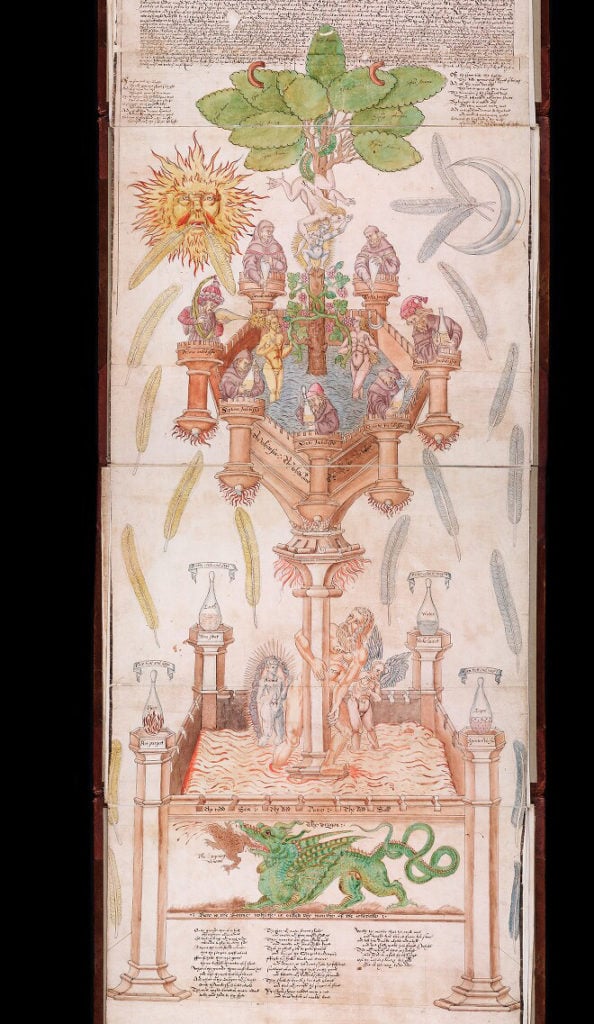
The Ripley Scroll, detail (circa 1570). The Ripley Scroll, nearly 20 feet long, purports to illustrate how to make the Sorcerer’sStone. Photo courtesy of the Beinecke Rare Book and Manuscript Library, Yale University.
And if you’re wondering about the first book’s title change from the English edition’s Harry Potter and the Philosopher’s Stone to the American Harry Potter and the Sorcerer’s Stone, the exhibition includes a letter from Scholastic’s Arthur Levine in which he expresses his concern that “idiot Americans” might be turned off by the idea of philosophy.
The book’s first review, however, shows greater foresight. Handwritten by the young Alice Newton, daughter of Bloomsbury executive Nigel Newton, it reads “the excitement in this book makes me feel warm inside. I think it is possibly one of the best books an 8-9 year old could read.”
I’d go one step further. Bolstered by millennia of magical tradition, Rowling penned one of the best literary series of all time. At the New-York Historical Society, the depth of her creative genius on full display, it’s easy to understand why the story of Harry Potter resonates across the ages, drawing in fans from around the world. The magic, simply put, is real.
See more photos from the exhibition below.
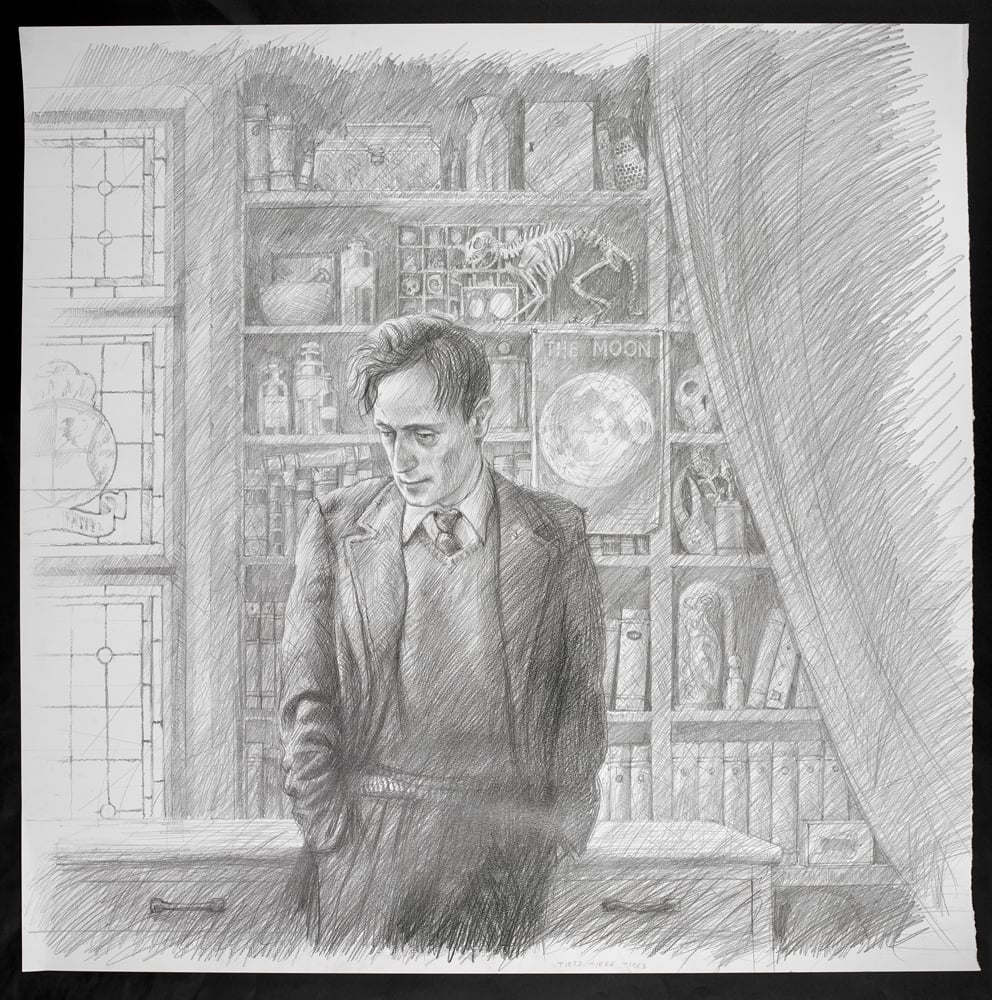
Jim Kay, Portrait of Professor Remus Lupin. Courtesy of Bloomsbury Publishing Plc.
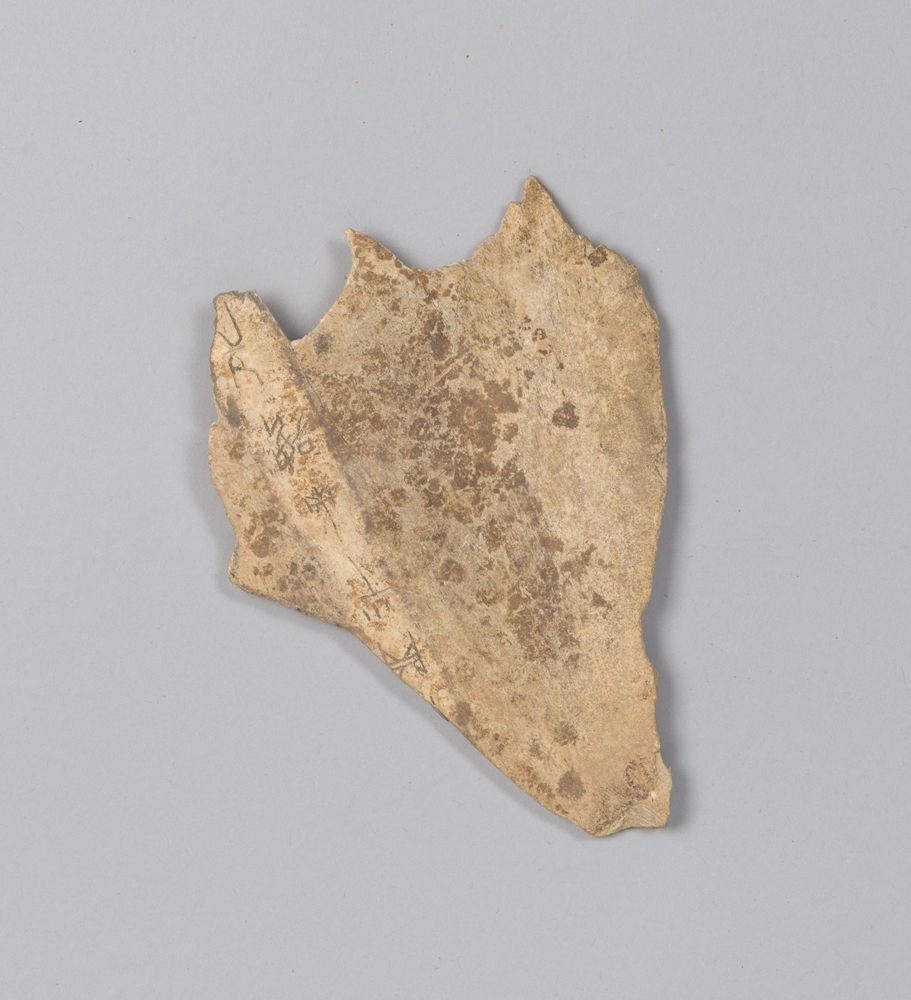
Oracle bones, China (circa 1600–1046 BC). Photo courtesy of the Metropolitan Museum of Art.

Black Moon crystal ball, (circa 20th century). “Smelly Nelly,” a witch who wore copious amounts of perfume in order to commune with the spirits, owned this moon crystal. Photo ©Museum of Witchcraft, Boscastle.

Muhammad b. Abi Bakr, Astrolabe (Isfahan, circa 13th century). Photo by Kendra Meyers, courtesy of the American Museum of Natural History Library, the Bliss Collection.
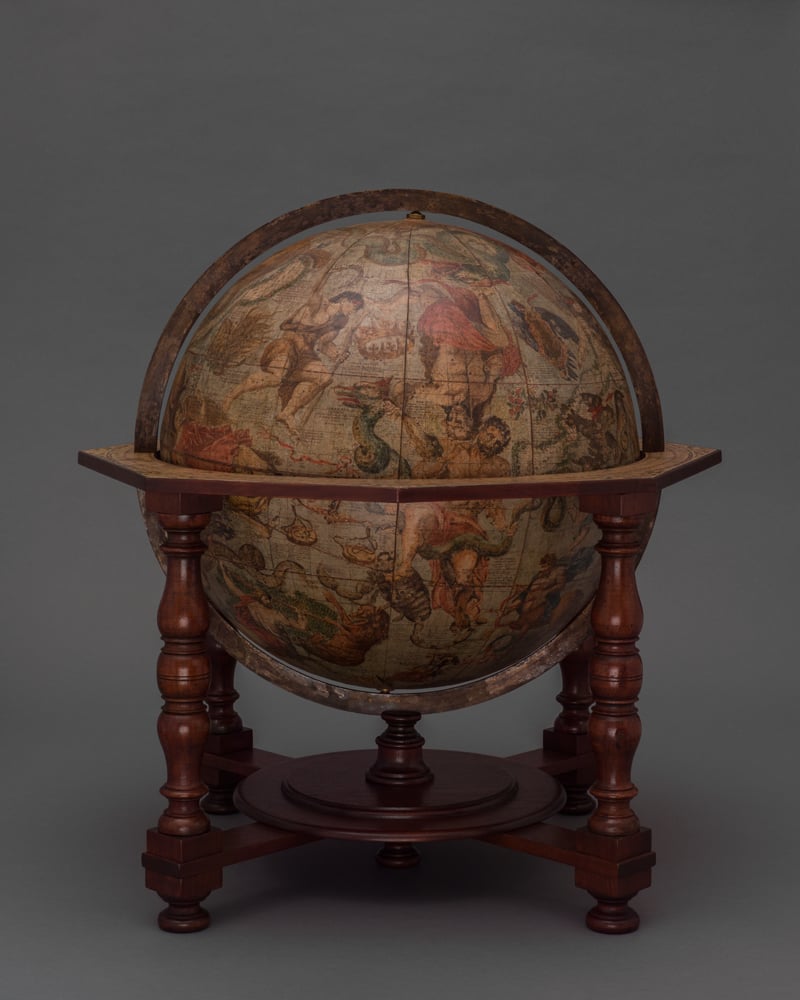
Vincenzo Coronelli, Celestial globe (Venice, 1699). Photo courtesy of the Beinecke Rare Book and Manuscript Library, Yale University.
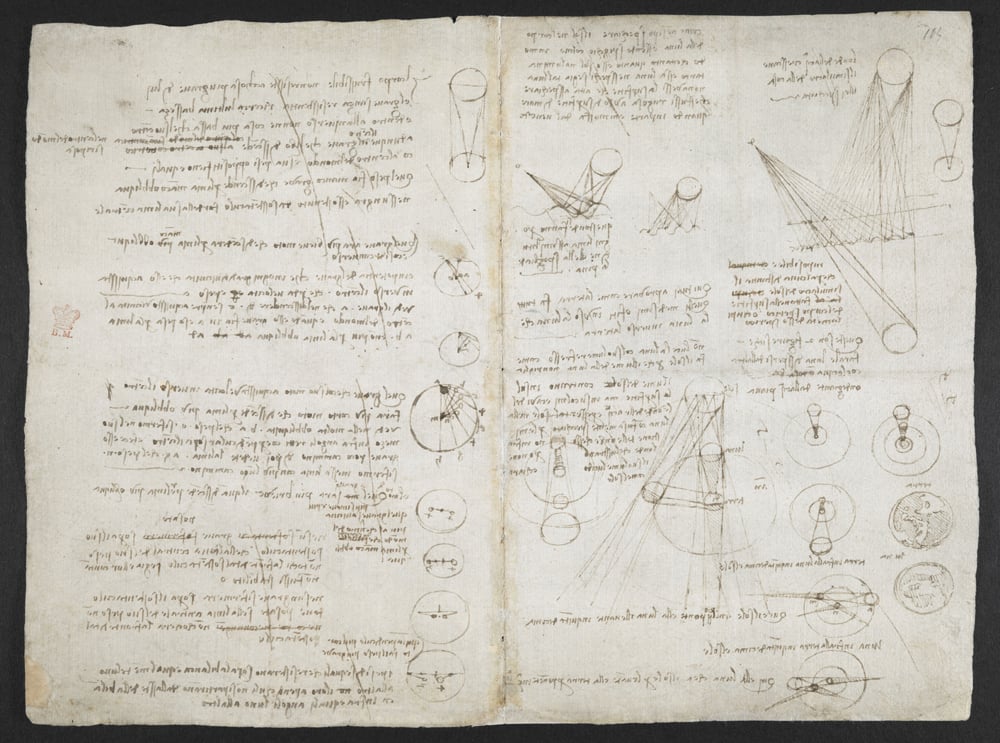
Leonardo da Vinci’s notebook (Italy, circa. 1506–08), written in mirror handwriting. The Renaissance great incorrectly theorized that the moon was covered in water and that the Earth is the center of the universe. ©British Library Board
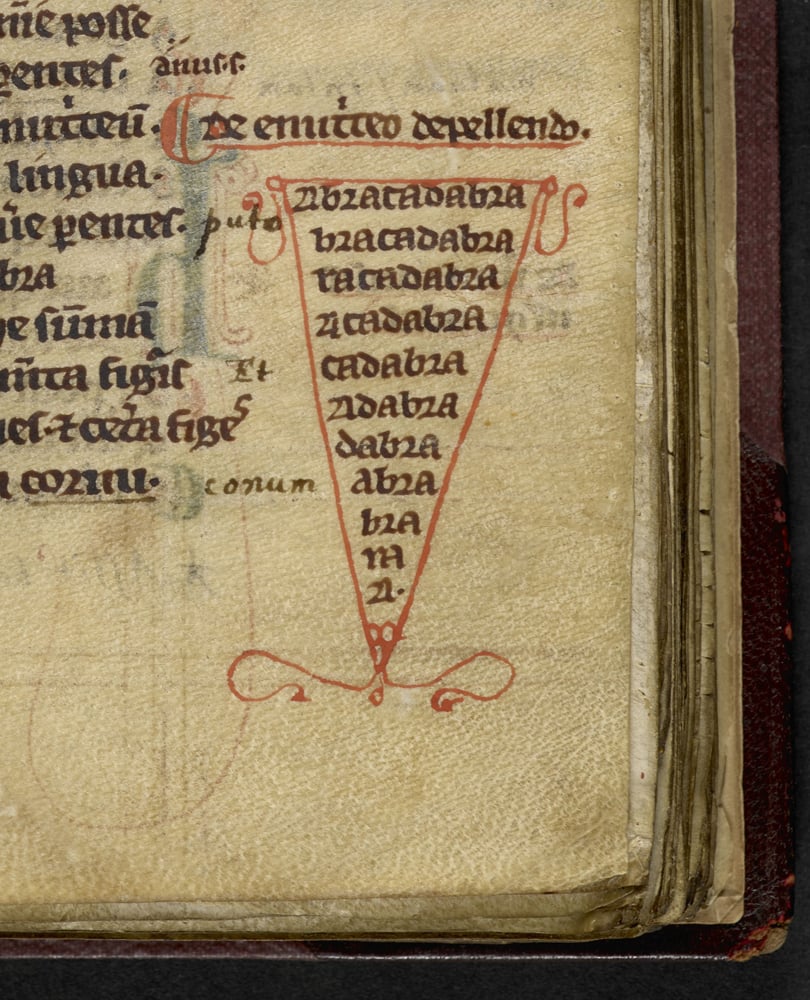
Liber Medicinalis, detail (Canterbury, circa 13th century). This manuscript contains the earliest known use of the charm Abracadabra. Photo ©British Library Board

Cotton Mather, The Wonders of the Invisible World (London, 1693). The Salem witch crisis depended largely on local feuds, religious strife, and long-held cultural beliefs about women and gender. Mather wrote The Wonders of the Invisible World as his justification for the Salem witch trials. Photo courtesy of the New-York Historical Society Library.
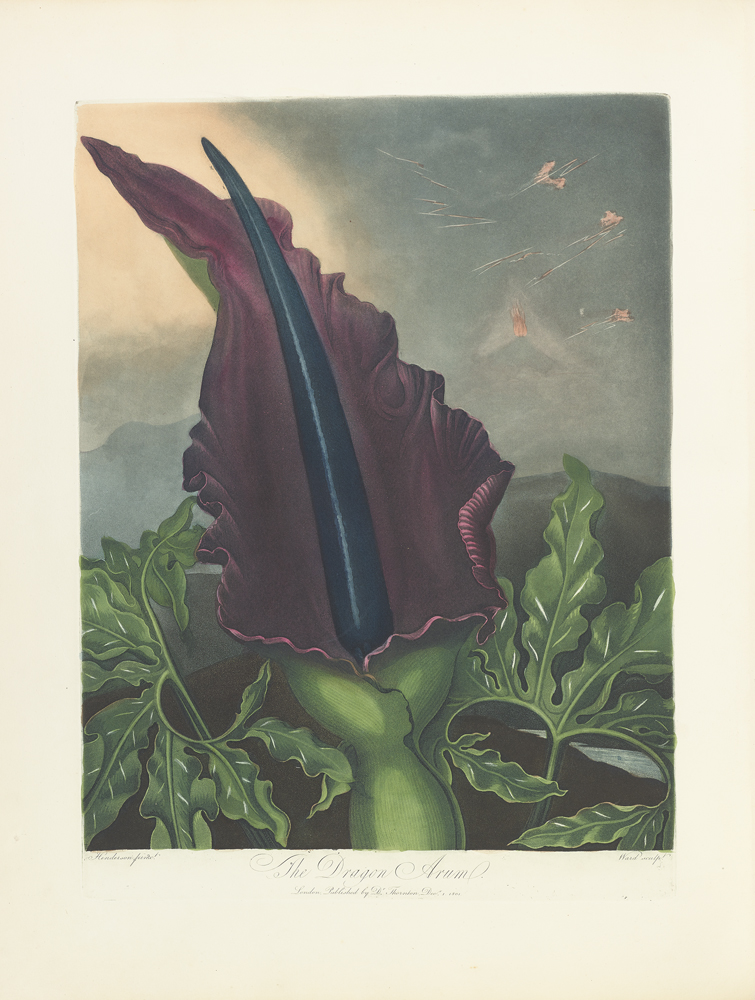
Robert John Thornton, The Temple of Flora(London, 1807). Photo courtesy of the LuEsther T. Mertz Library of the New York Botanical Garden.
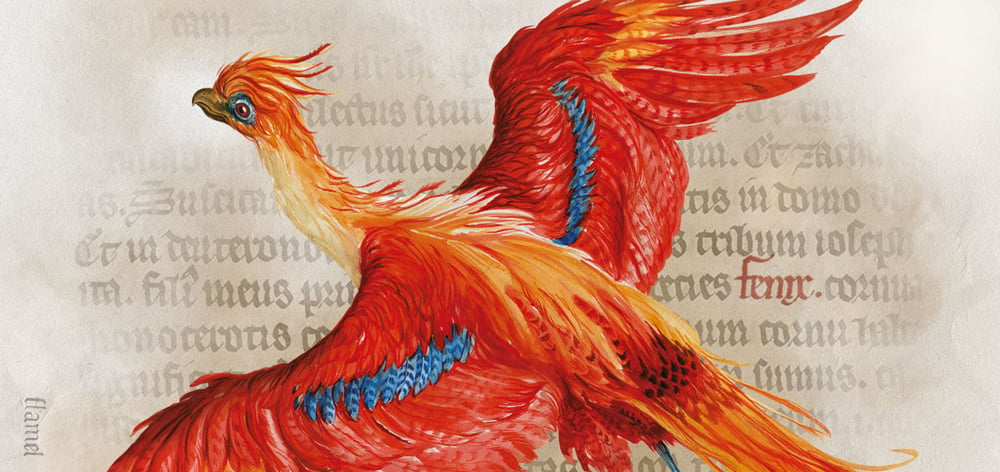
Study of the phoenix by Jim Kay. On loan from Bloomsbury Publishing. Background image is a detail from a Medieval Bestiary (England, 13th century). ©Bloomsbury Publishing Plc 2016. Original design by the British Library 2017.
![Jacob Meydenbach, [H]ortus Sanitatis Mainz (1491) ©British Library Board. Latin for “The Garden of Health,” the Hortus Sanitatis is the first printed encyclopedia of natural history, featuring sections devoted to plants, animals, birds, fish, and stones. This hand-colored woodcut illustration shows a Potions class.](https://news.artnet.com/app/news-upload/2018/10/2-harry-potter-jacob-meydenbach_1.jpg)
Jacob Meydenbach, [H]ortus Sanitatis Mainz (1491) ©British Library Board. Latin for “The Garden of Health,” the Hortus Sanitatis is the first printed encyclopedia of natural history, featuring sections devoted to plants, animals, birds, fish, and stones. This hand-colored woodcut illustration shows a Potions class.

Gold filigree case containing a bezoar, a stone that amasses in the stomachs of ruminants from undigested fiber, used as a remedy for poison. Photo courtesy of the Wellcome Collection, which is cared for by the Science Museum, London; ©Board of the Trustees of the Science Museum, London.

Cover art for the Harry Potter illustrated book series by Brian Selznick US (2018). For the 20th anniversary of the publication of Harry Potter and the Sorcerer’s Stone in the US, Scholastic commissioned Selznick to reimagine the cover art for the entire Harry Potter series. Selznick designed the seven covers as a single image that tells the story of the Boy Who Lived from his arrival on Privet Drive to the Battle of Hogwarts. ©Brian Selznick 2018 courtesy of Scholastic Inc.
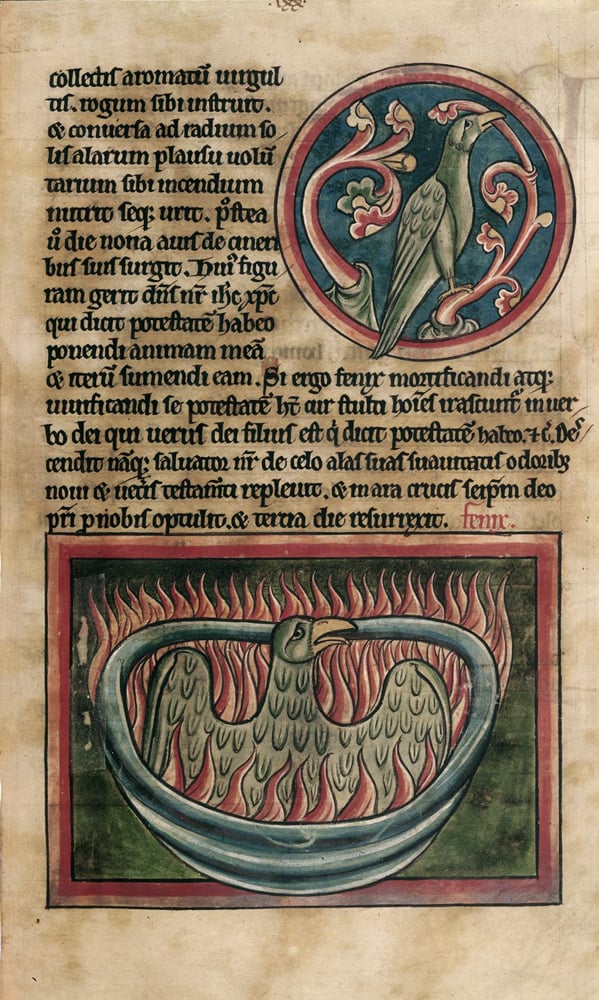
Bestiary containing a description of a “fenix,” or phoenix (England, circa 13th century). Photo © British Library Board
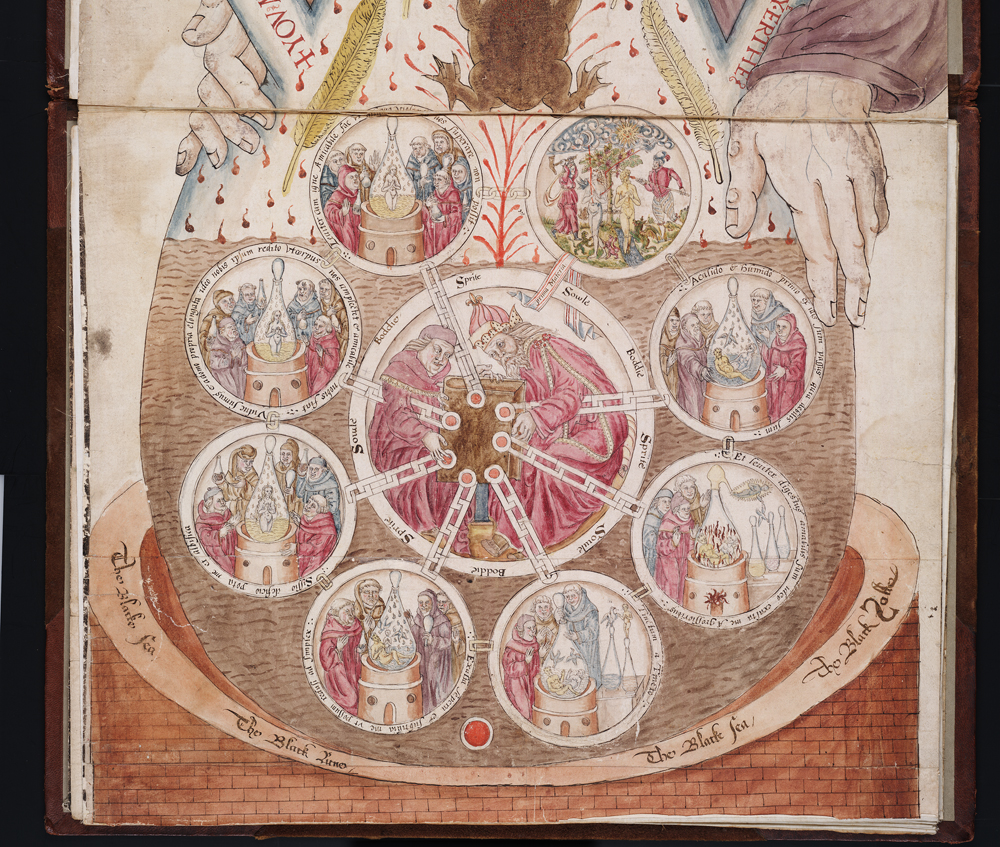
The Ripley Scroll, detail (circa 1570). The Ripley Scroll, nearly 20 feet long, purports to illustrate how to make the Philosopher’s Stone. Photo courtesy of the Beinecke Rare Book and Manuscript Library, Yale University.
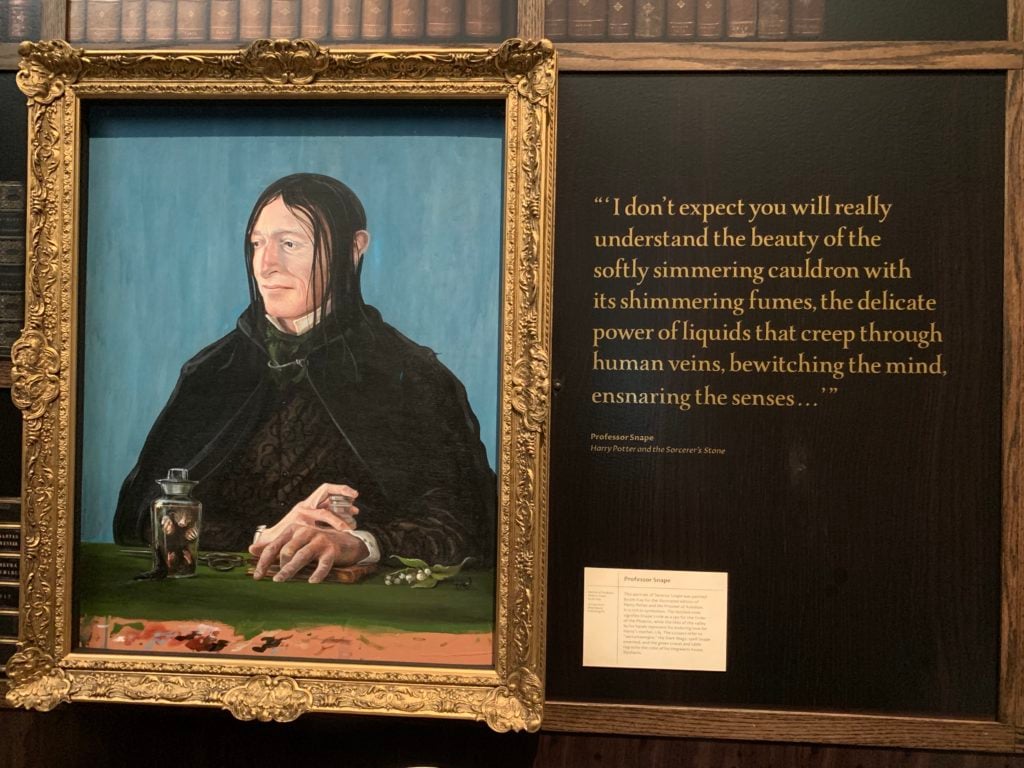
Jim Kay’s portrait of Professor Severus Snape in “Harry Potter a history of Magic.” Photo by Sarah Cascone.
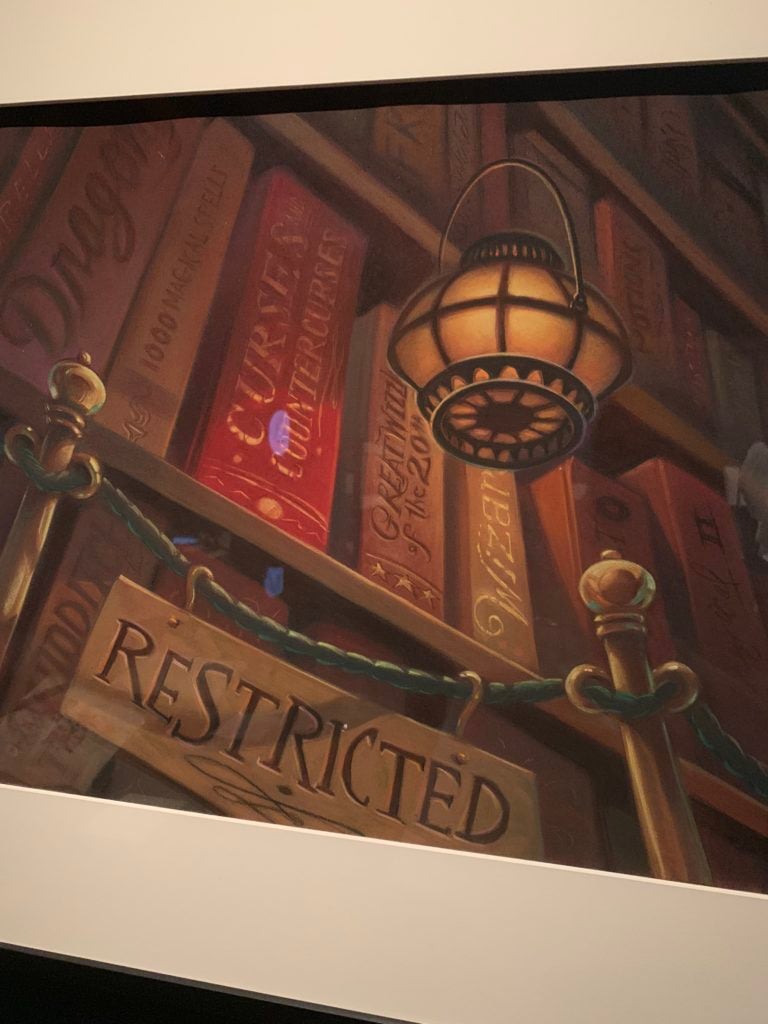
Mary GrandPré’s drawing of the restricted section of the library in “Harry Potter: A History of Magic.” Photo by Sarah Cascone.

International editions of Harry Potter and the Sorcerer’s Stone in “Harry Potter: A History of Magic.” Photo by Sarah Cascone.
“Harry Potter: A History of Magic” is on view at the New-York Historical Society, 170 Central Park West, New York, New York, October 5, 2018–January 27, 2019. Timed-entry tickets must be purchased ahead of time. General admission is $21.